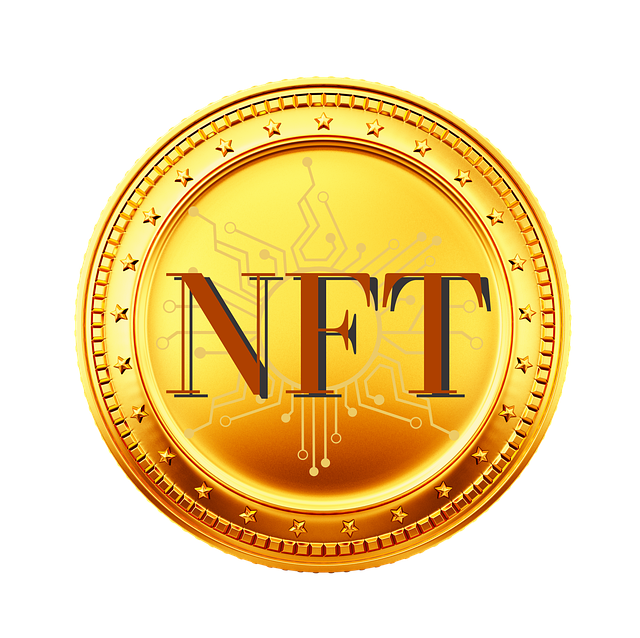Practical Guide: build your own crypto trading bot
Author: Jameson Richman Expert
Published On: 2025-11-01
Prepared by Jameson Richman and our team of experts with over a decade of experience in cryptocurrency and digital asset analysis. Learn more about us.
If you're ready to build your own crypto trading bot, this comprehensive guide walks through everything from concept and strategy selection to coding, backtesting, deployment, and ongoing maintenance. Whether you're a developer wanting to automate strategy execution or a trader seeking consistent, emotion-free execution, this article provides actionable steps, best practices, examples, and resources to create a reliable automated trading system.

Why build your own crypto trading bot?
Automating trading offers benefits that manual trading can't match: speed, discipline, 24/7 execution, and the ability to consistently apply precise rules. Building your own crypto trading bot lets you:
- Customize strategies exactly to your risk profile and edge.
- Reduce emotional mistakes inherent in manual trading.
- Scale and test strategies quickly via backtesting and paper trading.
- Integrate multiple exchanges and data sources for arbitrage or multi-market strategies.
High-level architecture of a crypto trading bot
A robust trading bot typically includes these modules:
- Data ingestion — historical and real-time market data.
- Strategy engine — trading rules, indicators, machine learning models.
- Risk & money management — position sizing, stop-loss, max drawdown rules.
- Execution layer — exchange API integration, order management.
- Backtesting & simulation — test strategies on historical data.
- Monitoring & logging — metrics, alerts, dashboards.
- Security — API key management, secure hosting, access control.
Prerequisites: skills and tools
Before you start, ensure you have:
- Basic programming skills (Python, JavaScript/Node.js, or C# are common).
- Familiarity with technical indicators, market microstructure, and trading concepts.
- Knowledge of REST and WebSocket APIs (what an API is).
- Access to historical data and a testing environment (paper trading).
- Understanding of security best practices and basic server administration.

Step 1 — Choose exchanges and connect via APIs
Decide which exchanges your bot will trade on. Consider liquidity, fees, available markets, and API quality. Popular choices include Binance, MEXC, Bitget, and Bybit.
- Open accounts (referral links if you want): Register on Binance, Sign up on MEXC, Create a Bitget account, Join Bybit.
- Use official API docs to generate API keys. Always grant the minimum permissions required — usually trading and market data, avoid withdrawal permissions unless necessary.
Read exchange docs carefully for rate limits, order types, and WebSocket endpoints. For an introduction to algorithmic trading research, see the Wikipedia entry on algorithmic trading.
Step 2 — Choose your stack
Popular languages and libraries:
- Python: ccxt (exchange wrapper), pandas (data), numpy, TA-Lib or ta (indicators), Backtrader/VectorBT/Zipline (backtesting).
- Node.js: ccxt, technicalindicators, ws for WebSockets.
- Java/C#: for low-latency or enterprise setups.
For most independent builders, Python strikes a balance of speed of development and ecosystem maturity.
Step 3 — Design a strategy
Strategy design is the heart of a profitable bot. Start simple. Examples of strategy families:
- Trend-following: moving average crossovers, breakout systems.
- Mean reversion: RSI oversold/overbought, Bollinger Bands mean reversion.
- Statistical arbitrage: pairs trading across correlated assets.
- Market making: post bids and offers to capture spread (higher complexity and capital requirement).
- Event-driven: reacting to news, on-chain signals, or macro events.
Example simple strategy: 50/200 EMA crossover — enter long when 50 EMA crosses above 200 EMA; exit on opposite cross. Use strict risk controls (stop loss, position size limits).
Signals and indicators
Use a combination of indicators and confirmations instead of a single signal. Commonly used:
- Moving Averages (SMA, EMA)
- Relative Strength Index (RSI)
- MACD
- Bollinger Bands
- Volume and on-chain metrics for crypto-specific insights

Step 4 — Data: historical & real-time
High-quality data is essential for credible backtests:
- Historical OHLCV (open/high/low/close/volume) tick or 1-second data where possible.
- Order book snapshots and trades if building market-making or high-frequency strategies.
- Cleanse data for missing candles, duplicate ticks, and outliers.
Sources: exchange historical endpoints, paid data vendors, or open sources. Store data in a time-series optimized database (InfluxDB, TimescaleDB) or compressed Parquet files for efficient backtesting.
Step 5 — Backtesting and walk-forward testing
Backtesting tests historical performance, but beware of overfitting. Follow these practices:
- Use out-of-sample testing — split data into train and test (walk-forward analysis).
- Simulate realistic conditions: slippage, latency, fees, partial fills.
- Run Monte Carlo simulations to understand variance and expected drawdowns.
- Use robust metrics: Sharpe ratio, Sortino ratio, max drawdown, CAGR, win-rate, payoff ratio.
Tools: Backtrader, VectorBT, pybacktest, or custom frameworks. After backtesting, move to paper trading for live-market validation before real capital.
Step 6 — Execution and order management
Execution reliability matters. Key ideas:
- Use WebSocket streams for fast market updates and REST APIs for order placement.
- Implement order state tracking — handle fills, partial fills, cancels, and rejections robustly.
- Throttle requests to respect exchange rate limits and implement exponential backoff on failures.
- Include idempotency / client order IDs to avoid duplicate orders.
Handling edge cases
Design the bot to safely handle:
- Network interruptions — reconnect logic and graceful shutdown.
- API errors — rollback logic if needed.
- Unexpected fills — reconciliation between local state and exchange state.

Step 7 — Risk management and position sizing
Risk controls are more important than raw strategy performance. Include:
- Maximum position size per trade and consolidated exposure limits.
- Per-trade stop-loss and take-profit levels.
- Daily loss limit and circuit-breakers to pause trading if thresholds are exceeded.
- Dynamic position sizing like Kelly Criterion or fixed fractional sizing — but be conservative.
Step 8 — Security best practices
Crypto trading bots are tempting targets. Secure your environment:
- Never hard-code API keys in source control. Use environment variables or secrets managers (AWS Secrets Manager, HashiCorp Vault).
- Restrict API keys (IP whitelisting, read-only where possible, disable withdrawals).
- Run bots on secure, monitored servers. Keep OS and libraries updated.
- Encrypt logs and backups containing sensitive data.
Step 9 — Monitoring, alerts, and observability
In production, you must monitor health and performance:
- Metrics: PnL, open positions, latency, error rates.
- Logging: order lifecycle, trade events, exceptions.
- Alerts: push notifications, email, or chat notifications for critical events (huge drawdowns, connectivity issues, errors).
- Dashboards: Grafana or similar for real-time visibility.

Step 10 — Continuous improvement and model updates
Trading markets evolve. Maintain a disciplined process:
- Periodically re-train or re-optimize parameters on new data with cross-validation.
- Track concept drift: strategy performance degradation signals.
- A/B test changes and always validate on out-of-sample periods.
Example: Minimal Python trading bot skeleton
Below is a simplified pseudo-example showing the structure (not production-ready). Use libraries like ccxt for exchange connectivity and backtesting frameworks for simulations.
# Pseudo-code outline
import ccxt
import pandas as pd
exchange = ccxt.binance({'apiKey': 'YOUR_KEY', 'secret': 'YOUR_SECRET'})
def fetch_ohlcv(symbol, timeframe, since=None):
return exchange.fetch_ohlcv(symbol, timeframe, since=since)
def compute_indicators(df):
df['ema50'] = df['close'].ewm(span=50).mean()
df['ema200'] = df['close'].ewm(span=200).mean()
return df
def generate_signal(df):
last = df.iloc[-1]
prev = df.iloc[-2]
if prev['ema50'] < prev['ema200'] and last['ema50'] > last['ema200']:
return 'buy'
if prev['ema50'] > prev['ema200'] and last['ema50'] < last['ema200']:
return 'sell'
return 'hold'
def place_order(side, amount, symbol):
# Wrap in try/except, check balance, use limits & stop-loss logic
order = exchange.create_market_order(symbol, side, amount)
return order
# Main loop: fetch data, compute indicators, signal, risk check, place orders
Advanced topics
Machine learning and on-chain signals
Machine learning can enhance signal quality, especially when combining on-chain metrics, social sentiment, and market features. However:
- ML models require careful feature engineering and large, clean datasets.
- Overfitting is a common pitfall — prefer simpler models and explainable features when starting out.
- Use robust validation: walk-forward, cross-validation, and stress testing on periods of market turmoil.
Options and derivatives strategies
If you plan to trade options or use derivatives, the complexity rises: Greeks, margin, implied volatility, and funding rates matter. For deeper learning, consult specialized resources like the Crypto Options Trading Strategy Builder guide.

Testing & tools: practical checklist
Before live deployment, run through this checklist:
- Backtests with slippage, fees, and order book dynamics.
- Paper trading for several market regimes (bull/bear/volatile).
- Unit tests for critical code paths (order placement, reconciliation).
- Load test to ensure rate limits and latency behavior.
- Security review and key rotation policy.
Compliance, tax, and legal considerations
Automated crypto trading has tax and regulatory implications. Keep meticulous records of trades and PnL. Check your local tax authority guidance (example: U.S. IRS guidance on virtual currencies) and consult a tax professional.
U.S. IRS guidance on virtual currency: IRS — Virtual Currencies.
Common pitfalls and how to avoid them
New bot builders often stumble on these issues:
- Overfitting to historical data. Keep models simple and validate properly.
- Ignoring fees and slippage. Always model them — they can turn winners into losers.
- Poor error handling — your bot must survive network/API hiccups and resume correctly.
- Security lapses — exposed API keys or inadequate server protection.
- Insufficient capital planning — underestimating margin requirements or worst-case drawdowns.

Resources and further reading
To deepen your trading, strategy ideas and execution:
- In-depth trading guide: Complete Crypto Trading Guide (PDF for 2025).
- Signals and strategy examples: Free Signals & Bots / Copy Trading Guide.
- Macro and token-specific analysis: XRP ETF SEC Approval & Price Prediction — useful for event-driven strategies.
- Cross-market signals and strategy research: Most Accurate Forex Signals & Proven Strategies.
- Strategy inspiration for options trading: see the Crypto Options Strategy Builder.
Where to learn and accelerate
If you need structured learning materials, combine technical programming courses with trading- and finance-focused courses. Consider university resources, online bootcamps, and authoritative blogs. Reliable academic and educational sources include university lecture notes and Investopedia for clear trading definitions.
Practical example: workflow from idea to live
- Define the trading thesis: e.g., short-term momentum on BTC/USDT using EMA cross with volume confirmation.
- Collect data: 1m-1h historical OHLCV for the past 3 years.
- Prototype the signal in Python and backtest with realistic slippage/fees.
- Refine risk rules: 1% risk per trade, daily stop-loss 2% total portfolio drawdown.
- Paper trade for 1–3 months across different volatility regimes.
- Deploy to a secure VPS, enable logging/monitoring, and run with small capital initially.
- Scale gradually based on consistent performance and monitoring results.

Alternative: use professional signals and combine with automation
Building everything from scratch is educational but time-consuming. Some traders combine third-party signals, research, or strategy builders with their execution layer. If you want curated signals or strategy blueprints to test and automate, resources like the ones linked above can accelerate your learning and give ideas to incorporate into your own bot. Examples include market commentary, proven forex signal strategies, and trade idea packs to adapt into your automation.
Final checklist before going live
- Backtest results robust across timeframes and market regimes.
- Paper trading validated with realistic exchange behavior.
- Security audit completed and API keys restricted.
- Monitoring and alerting implemented.
- Capital allocation & risk limits defined and enforced by the bot.
- Legal & tax record-keeping plan in place.
Conclusion
To build your own crypto trading bot successfully, combine disciplined strategy design, rigorous testing, secure engineering practices, and continuous monitoring. Start small and iterate: simple, well-tested systems typically outperform complex, overfit models in live markets. Use the resources linked here to learn strategy ideas, options frameworks, and proven signal methods, and integrate them carefully into your own automated execution environment.
Further reading and helpful guides to accelerate your progress:
- Complete Crypto Trading Guide PDF — comprehensive manual for traders.
- Free Signals & Bots Guide — useful for combining signals and automation.
- Options Trading Strategy Builder — if you plan to expand into options.
- Forex Signals & Strategies — cross-market ideas and robustness checks.
- XRP ETF Analysis — an example of event-driven trading research.
Ready to start? Open exchange accounts and get API keys to begin testing: Binance registration, MEXC sign-up, Bitget referral, Bybit invite.
If you want, I can provide a simple starter code repo outline (Python + ccxt + basic EMA crossover) and a backtesting configuration to accelerate your first prototype. Tell me your preferred language, exchange, and timeframe and I’ll tailor the starter kit.